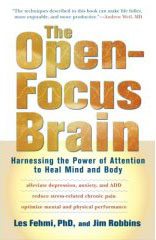"Pain is inevitable. Suffering is optional." That statement, by someone whose name is lost to history, is true wisdom. Pain is something that happens to us, and then we have choices on how to relate to it. How much we suffer is one of those choices.
It is determined by how we attend to our pain.
By learning to pay attention to pain in more than one way, we can change the suffering part of the equation.
Some pain is inevitable. We bang a shin or strain a shoulder and it hurts. But pain that endures for no apparent reason, or even a pain that endures for a known reason, can be localized and dissolved as an experience of and in the body. But pain is actually generated by circuitry in the brain.
Take the case of phantom limb pain. People who have lost an arm for example, years later report pain, often severe pain, in the missing hand or elbow. Why? Because the circuitry of the brain that represents the missing arm become active.
But it’s not just that brain circuitry is active and the pain has a life of its own, beyond on our control. How we pay attention to pain, is something within our control.
We all tend to pay attention to pain in the high arousal mode of attention, we call narrow, objective focus, which is how the attention style we habitually use fights and avoids the pain. If we let pain in, we think, it will hurt more. But the opposite is true – it’s more painful over time to try to avoid it in a rigid narrow objective focus of attention.
The strategy then is to broaden our aperture of attention with Open Focus exercises by establishing a general awareness of space. With our awareness so much larger, the pain becomes a small part of one’s experience and is no big deal. It often dissolves on its own, or we can easily dissolve it.
Thursday, December 3, 2009
Subscribe to:
Posts (Atom)
